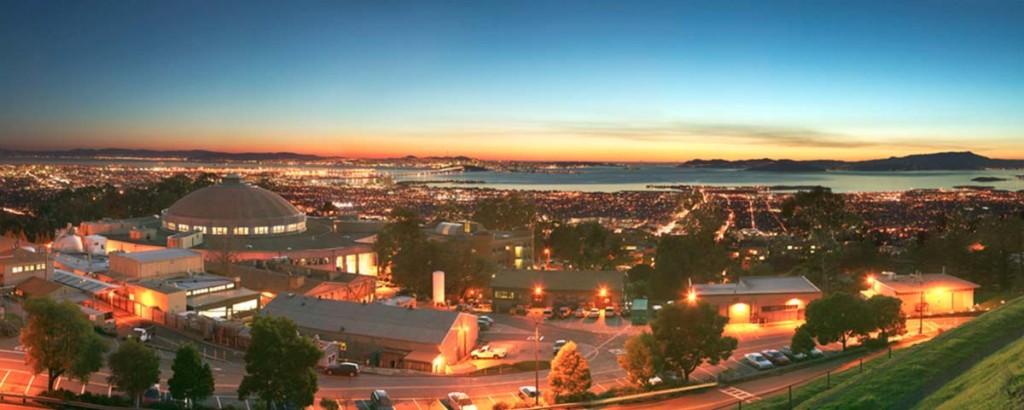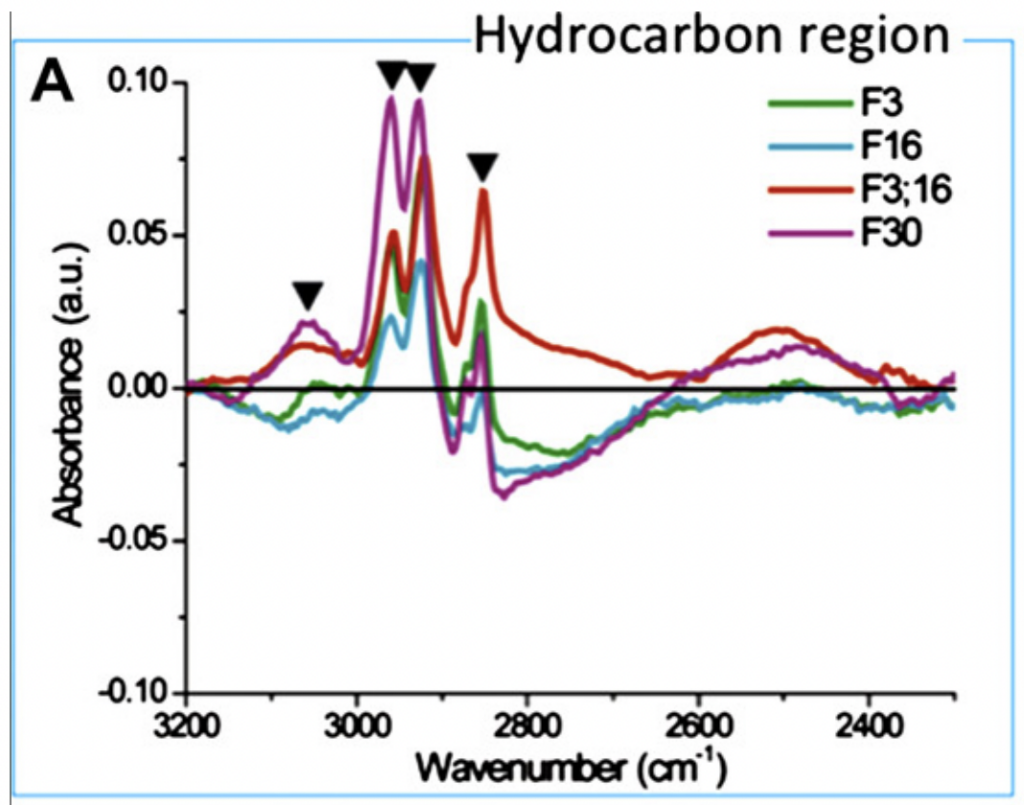
Pushing the limits of infrared spectroscopy
The Berkeley Synchrotron Infrared Structural Biology (BSISB) imaging program is a national user program at the Lawrence Berkeley National Laboratory (LBNL) in Berkeley, California. BSISB offers specialized experimental capabilities that make use of the high-intensity (bright) synchrotron radiation produced by the Advanced Light Source (ALS) — a ring-shaped particle accelerator — to study organisms and biomaterials at spatial dimensions smaller than the eye can see.
The acceleration of electrons along the curved path of the ALS ring to near the speed of light causes the emission of a broad spectrum of bright light, ranging from x-ray to infrared wavelengths. While x-rays can rupture molecular bonds, infrared light only has enough energy to excite their natural vibration modes. At BSISB, we take advantage of this principle to use a broad spectral range of infrared light to probe a sample’s biomolecular composition, or even to observe biogeochemical processes happening in real time. The use of non-invasive synchrotron infrared (SIR) light also allows us to work with living cells in a non-destructive, label-free approach.
BSISB is the only user resource sponsored by the US Department of Energy Biological and Environmental Research program (DOE/BER) to solely employ SIR light for experimental research. Through ALS beamlines 1.4, 2.4, and 5.4, BSISB users have access to world leading synchrotron radiation-based Fourier transform infrared (SR-FTIR or sFTIR) spectromicroscopy and synchrotron infrared nano-spectroscopy (SINS) capabilities.
We actively collaborate with ALS staff to develop new capabilities — such as a bi-modal chemical imaging technique that combines sFTIR spectromicroscopy with spatially resolved mass spectrometry — as we strive to push the limits of this exciting analytical field. With SINS, we can now achieve a less-than-20-nm spot size (spatial resolution) on biological samples using plasmonic tips with an atomic force microscopy (AFM) setup.
This is just a brief introduction to synchrotron infrared spectroscopy and the Capabilities that BSISB offers. To learn more about recent scientific breakthroughs supported by our program, continue reading below and then visit our Highlights and Publications pages. We use infrared radiation beamlines to study live materials and organisms.
Enabling scientific breakthroughs
Did you know that a microbial community’s climate history dictates its metabolic response to future changes in climate? That’s what a team of LBNL earth and environmental science researchers recently discovered, using a combination of field experiments and laboratory work — including sFTIR spectromicroscopy, through the BSISB program.
Have you ever wondered what “disease” looks like at the cellular level — or how a complex disease can manifest from just a single cell? BSISB is helping scientists answer this question by developing new capabilities to support live cell imaging. Using microfluidic membrane devices, we’re supporting the development of new methods for the rapid identification of time-dependent infrared spectral features that could be indicative of chemical abnormality associated with disease in individual cells.
Can we engineer living biomass systems for use in targeted bioremediation efforts, or the production of biodiesel? Researchers around the world are exploring these and similar challenges — and many of them bring their experimental work to BSISB. Our staff helped a team from the country of Georgia to track the time-dependent accumulation of toxic heavy metals in soil bacteria, as they work to develop targeted bioremediation technologies.
Of course, these are just a few examples of the variety of work that BSISB supports. To learn more, visit our Capabilities page, read some of our recent Publications, and then explore our FAQs page.

This SIR spectral time series was captured using a microfluidic membrane device. (Holman et al., 2021)

Engineered strains of cyanobacterium produce distinct hydrocarbon signatures that correlate with lipid content. (Hu et al., 2013)
Supported by DOE/BER and other funding organizations
BSISB is primarily supported by the US Department of Energy’s Biological Science Systems Division/Structural Biology Program, through the agency’s Biological and Environmental Research (DOE/BER) program, under contract no. DE-AC02-05CH11231.
The DOE/BER program supports scientific research and facilities to achieve a predictive understanding of complex biological, earth, and environmental systems with the aim of advancing the nation’s energy and infrastructure security.
Other synergistic contributions from funding organizations include the Gordon and Betty Moore Foundation and the Targeted Evaluation of Ionizing Radiation Exposure (TEI-REX) program of the Intelligence Advanced Research Projects Agency (IARPA).



